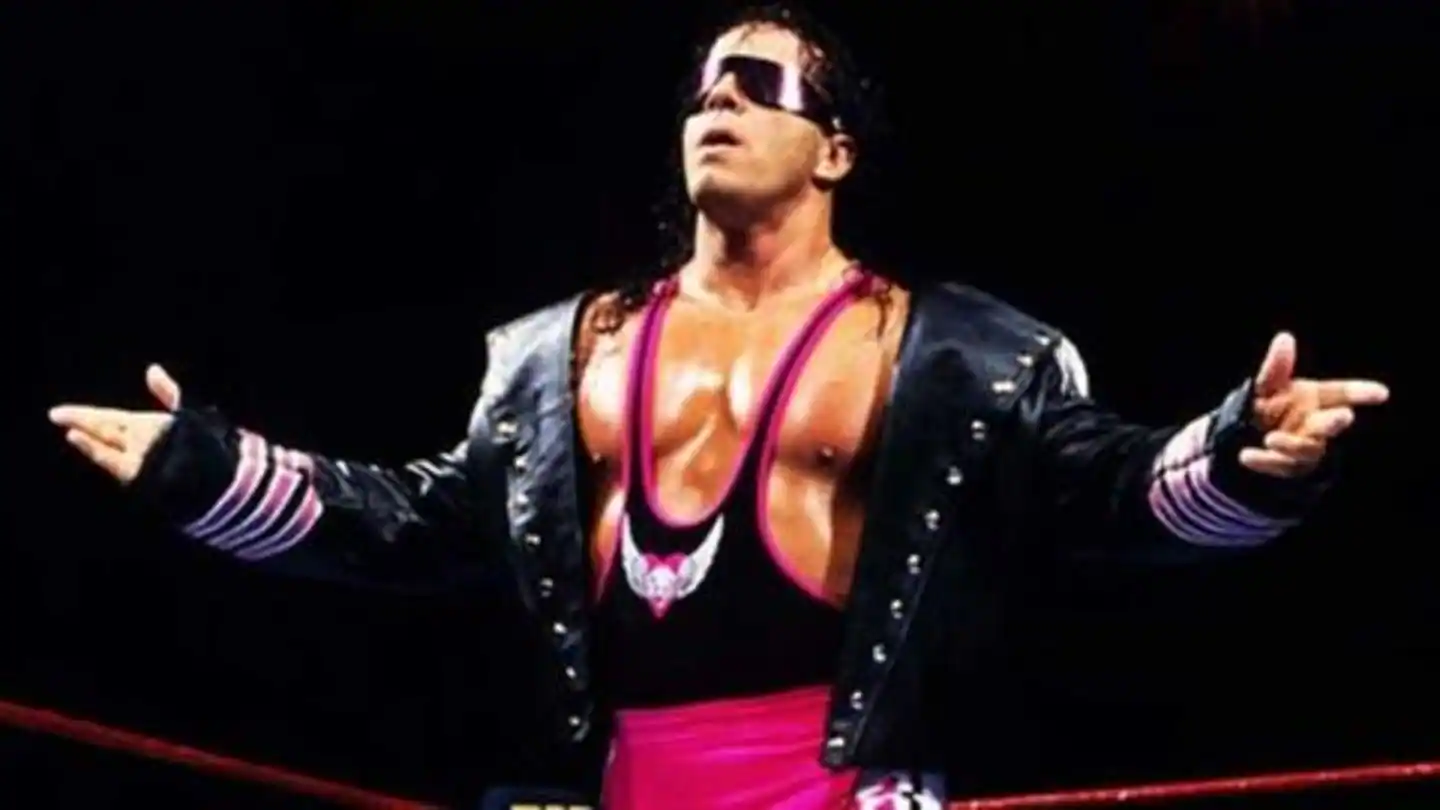More Than a Sharpshooter: Uncovering Bret Hart’s Journey
Bret “Hitman” Hart transcended the world of professional wrestling, becoming a symbol of technical mastery and captivating storytelling in an industry often characterized by theatrics. From his humble beginnings in the legendary Hart wrestling family to his controversial departure from the WWE, Bret’s journey embodies dedication, resilience, and an unwavering passion for his craft.
A Wrestling Legacy Forged in the Dungeon
Born on July 2, 1957, Bret Hart was destined for wrestling greatness. Growing up in Calgary, Alberta, Canada, the wrestling ring was practically an extension of his own backyard. His father, Stu Hart, wasn’t just dad; he was a renowned wrestler and promoter who ran the infamous “Hart Dungeon” – a training ground that separated the contenders from the pretenders. It was here, amidst the sweat and grueling training sessions, that Bret, alongside several of his siblings, honed the skills that would make him a legend.
The Making of “The Hitman”
Bret’s early career saw him paying his dues in Stampede Wrestling, his father’s promotion. But it wasn’t long before the world took notice of his technical prowess. Joining the WWE (then WWF) in 1984, he initially teamed with his brother-in-law, Jim “The Anvil” Neidhart, forming the formidable Hart Foundation. However, it was Bret’s individual talent that truly captivated audiences.
Clad in pink and black attire, “The Hitman” was born. Known for his stoic demeanor and a methodical, technically brilliant in-ring style, Hart became synonymous with signature moves like the Sharpshooter submission hold, a devastating piledriver, and an arsenal of suplexes that left opponents reeling.
As one wrestling oral history noted, Hart’s style “…[was] understood as non-fiction when collecting facts as to why he’s considered by many the greatest pro wrestler of all-time.” He brought a realism and authenticity to his matches that resonated with fans, proving that technical wrestling could be just as exciting as the high-flying, over-the-top antics of some of his contemporaries.
Championship Gold & Redefining an Era
Bret Hart’s commitment to excellence wasn’t just talk; it was backed up by an impressive collection of championship titles. He was a five-time WWE Champion, proving he could carry the company as its top star during a period of significant transition. His two reigns as WCW World Heavyweight Champion further solidified his drawing power and ability to adapt to different promotions and wrestling styles.
What truly set Bret apart was his impact on the industry itself. In the early 1990s, as North American wrestling was dominated by larger-than-life characters and increasingly outlandish storylines, Hart became a beacon for a return to technical in-ring work. His matches were clinics in storytelling, utilizing holds, counters, and a deep understanding of wrestling psychology to keep audiences on the edge of their seats.
As Wikipedia states, “A major international draw within professional wrestling, he is credited with changing the perception of mainstream North American professional wrestling in the early 1990s by bringing technical wrestling to the fore.” His influence can be seen in generations of wrestlers who followed in his footsteps, prioritizing in-ring skill and storytelling as the foundation of their craft.
The Montreal Screwjob: A Stain on a Storied Career
No discussion of Bret Hart’s career would be complete without addressing the infamous “Montreal Screwjob” at the 1997 Survivor Series. This controversial event, where Hart was essentially tricked into losing his WWE Championship to Shawn Michaels, remains a dark chapter in wrestling history.
The betrayal Hart felt from WWE owner Vince McMahon and Michaels left deep wounds, straining his relationship with the company for years to come. For many fans, the “Screwjob” only solidified Hart’s status as an icon, a wrestler who stood up for his principles even when it meant walking away from the industry’s biggest stage.
From Tragedy to Triumph: Beyond the Ring
Sadly, Bret Hart’s in-ring career would be cut short due to a severe concussion suffered during a match with Bill Goldberg at WCW Starrcade in 1999. The incident, while unintentional, forced Hart into early retirement and served as a harsh reminder of the physical risks inherent in professional wrestling.
Despite the adversity, Hart’s spirit remained unbroken. He channeled his experiences into a successful writing career, penning his critically acclaimed autobiography, “Hitman: My Real Life in the Cartoon World of Wrestling.” He also bravely battled and overcame prostate cancer in 2015, demonstrating the same fighting spirit that defined his time in the ring.
Bret Hart’s Enduring Legacy
Even though his time as an active competitor ended prematurely, Bret Hart’s legacy as one of the greatest professional wrestlers of all time remains secure. He was inducted into the WWE Hall of Fame in 2006, a testament to his lasting impact on the industry. His influence can be seen in wrestlers such as CM Punk, Daniel Bryan, and countless others who were inspired by his technical prowess and storytelling ability.
Facts About Bret Hart: Beyond the Championships
- Family Ties: Wrestling wasn’t just a profession for Bret; it was a family affair. His father, Stu Hart, was a renowned trainer and promoter, while several of his siblings, including brother Owen Hart, also achieved success in the wrestling world.
- A Man of Many Talents: Bret’s creativity extended beyond the ring. He dabbled in acting, appearing in shows like “Lonesome Dove” and lending his voice to “The Simpsons.”
- The Excellence of Execution Was More Than a Nickname: Bret’s meticulous in-ring style helped usher in a new era of appreciation for technical wrestling, influencing a generation of performers who valued skill and precision.
Bret Hart’s story is one of triumph, tragedy, and enduring legacy. He was more than just “The Hitman;” he was an artist, an innovator, and an inspiration to aspiring wrestlers and fans worldwide. His impact on professional wrestling is undeniable, and his contributions to the industry continue to be felt to this day.
Exploring Deeper: Unanswered Questions and Enduring Debates
- The Evolution of Wrestling: Did Bret Hart’s technical style ultimately become overshadowed by the rise of “sports entertainment” in wrestling? Or did he successfully bridge the gap between different eras?
- The Canadian Icon: How did Bret’s nationality influence his career and connection with fans, especially in contrast to the often-exaggerated personas of many American wrestlers?
- The Montreal Screwjob’s Ripple Effect: Beyond the immediate controversy, did this infamous event contribute to the more edgy “Attitude Era” that followed in WWE? Did it permanently alter fan perception of the business?
Exploring these complex questions provides a more nuanced understanding of Bret Hart’s impact, elevating your article from a simple collection of facts to a thought-provoking analysis of his enduring legacy.
Don’t Miss These Other Fascinating Articles:
- Seeking knowledge about the enigmatic James, son of Alphaeus? Dive into these amazing James, son of Alphaeus facts.
- Uncover the captivating life of MMA legend Randy Couture in our comprehensive article facts about Randy Couture.
- Step into the world of wrestling legend Bobby Eaton with these astounding facts about Bobby Eaton.
- Unveiling Bernhard Caesar Einstein’s Scientific Achievements: A Legacy in Engineering - July 15, 2025
- Uncover who is Jerry McSorley: CEO, Family Man, Business Success Story - July 15, 2025
- Discover Bernhard Caesar Einstein’s Scientific Contributions: Unveiling a Legacy Beyond Einstein - July 15, 2025















